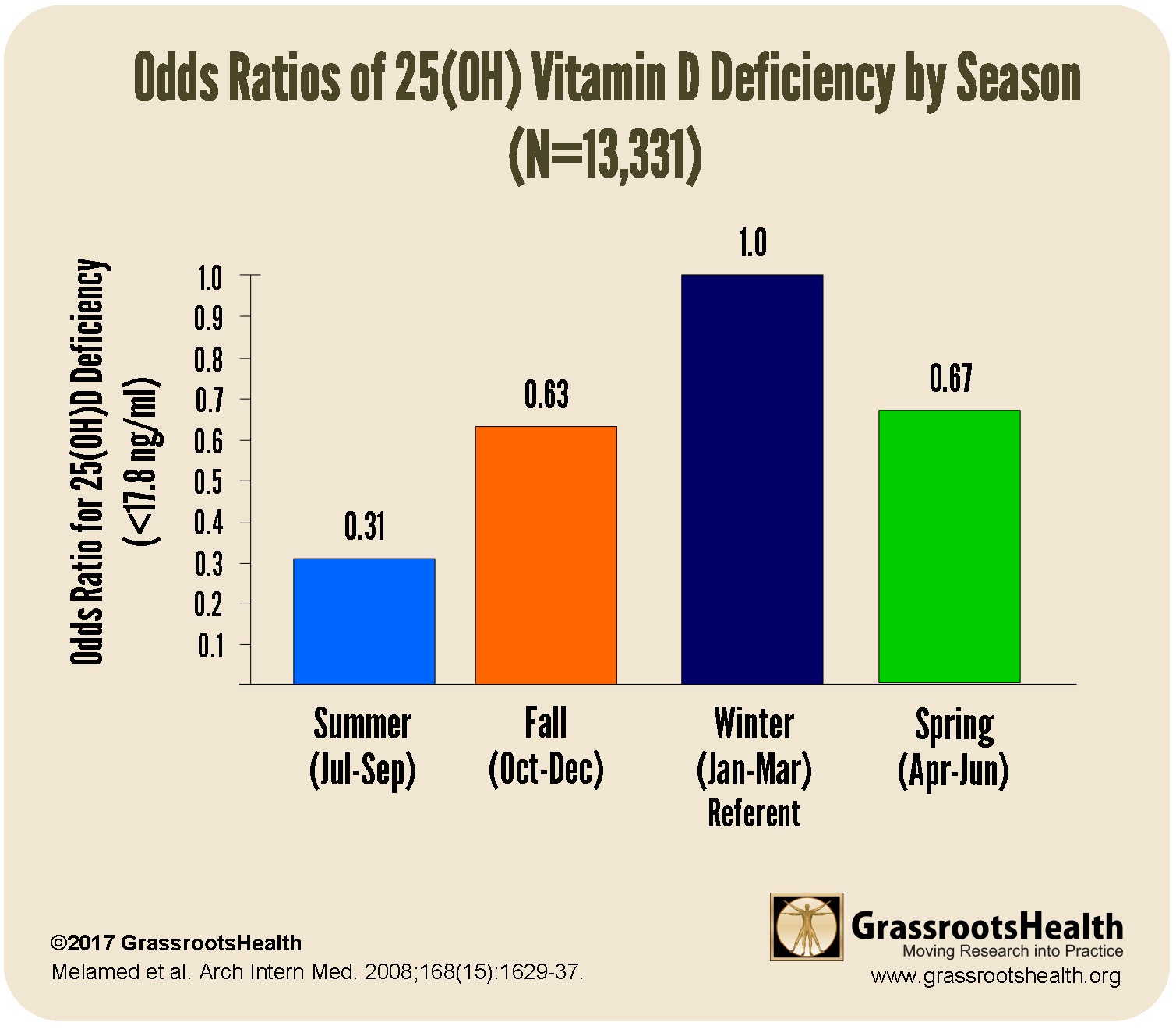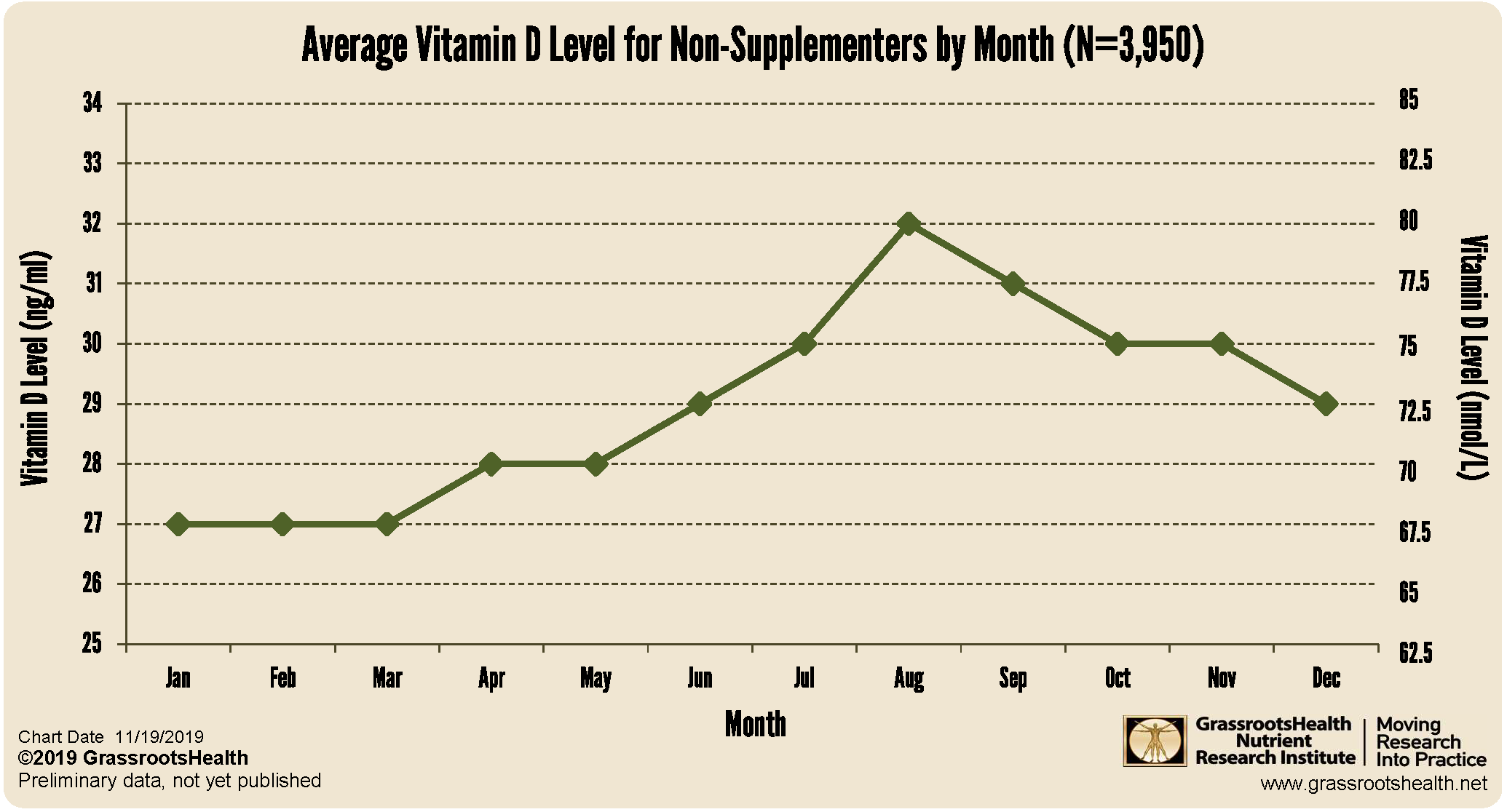Published on November 20, 2019
 Seasonal trends have been observed in several diseases. Vitamin D deficiency is known to be more prevalent during particular times of the year, which may contribute to an increased risk of certain seasonal diseases. During the summertime, for example, there is a 70% decreased risk of vitamin D deficiency (levels below 17.8 ng/ml or 44.4 nmol/L) compared to the winter time.
Seasonal trends have been observed in several diseases. Vitamin D deficiency is known to be more prevalent during particular times of the year, which may contribute to an increased risk of certain seasonal diseases. During the summertime, for example, there is a 70% decreased risk of vitamin D deficiency (levels below 17.8 ng/ml or 44.4 nmol/L) compared to the winter time.
The chart below, created from data presented in a 2008 paper by Melamed et al., 25-hydroxyl Vitamin D Levels and the Risk of Mortality in the General Population, demonstrates the profound influence that season can have on vitamin D levels and risk of deficiency. The researchers analyzed vitamin D levels and mortality using health data of 13,331 adults from the National Health and Examination Survey (NHANES) III (1988 – 1994).
What do we see in the GrassrootsHealth data?
Using your data, we created a chart of the average vitamin D level for participants who do not use a vitamin D supplement by month to show the seasonal fluctuations in vitamin D levels over the year. As shown on the chart below, the lowest levels among GrassrootsHealth participants are between January and March.
In an effort to maintain a target vitamin D level of 40-60 ng/ml (100-150 nmol/L) throughout the year, GrassrootsHealth recommends measuring the vitamin D level at the end of summer (October) and at the end of winter (March), and adjusting intake or vitamin D routine accordingly.
Don’t let yourself develop vitamin D deficiency!
Test now to know your level today, make sure you’re ready for the winter, and decrease your risk of seasonal health issues. Take steps to keep it within a target of 40-60 ng/ml or 100-150 nmol/L! Through GrassrootsHealth Nutrient Research Institute, you can also test your essential elements magnesium, copper, zinc and selenium, toxins such as lead, mercury and cadmium, as well as your omega-3 levels, inflammation levels and thyroid stimulating hormone (TSH) level. Find out your levels today! Log on to the shop (click the link below) to get your tests and see for yourself if your level can be improved.
Make sure you track your results before and after, about every 6 months!
How can I track my nutrient intake and levels over time?
To help you track your supplement use and nutrient levels, GrassrootsHealth has created an online tracking system called myData-myAnswers. For each specific supplement, you can track what days you take it, how much, and many other details. This will help you know your true supplemental intake and what patterns of use work for you to reach and maintain optimum nutrient levels. Check it out today!









